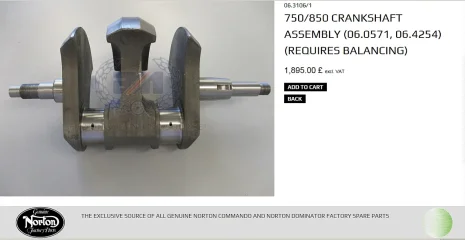lcrken
VIP MEMBER
- Joined
- Mar 15, 2009
- Messages
- 5,035
NKN said:Thank you for helping me to improve my English :wink: I taught a "billet something" was something done in one piece of metal. And not an assembly of parts.
Easy to be confused. The term "billet" is much misused by the performance industry. A century or two ago it was used to describe a lump of cast metal, usually circular or rectangular in cross section, that could be further worked into some sort of product. In today's metalworking culture it is used to describe a similar shaped lump of metal at the end of the wrought metal production cycle. For example, steel is first cast into ingots, which are then rolled into bloom, which is then further rolled and/or extruded into billet. That's a little simplified, but gives the picture. In high performance parlance, anything that was machined from a billet, as opposed to being cast, forged, welded,or otherwise fabricated, came to be referred to as a billet part, i.e. billet crank, billet rods, etc. I think it started out by describing parts as "machined from billet", and was later shortened to just billet. Then it got extended to the cosmetic bling market, mostly to distinguish "billet" parts from castings. Now it almost seems like the marketing people have decided to label anything made from metal as "billet".
More than you wanted to know, right? :lol:
Ken

